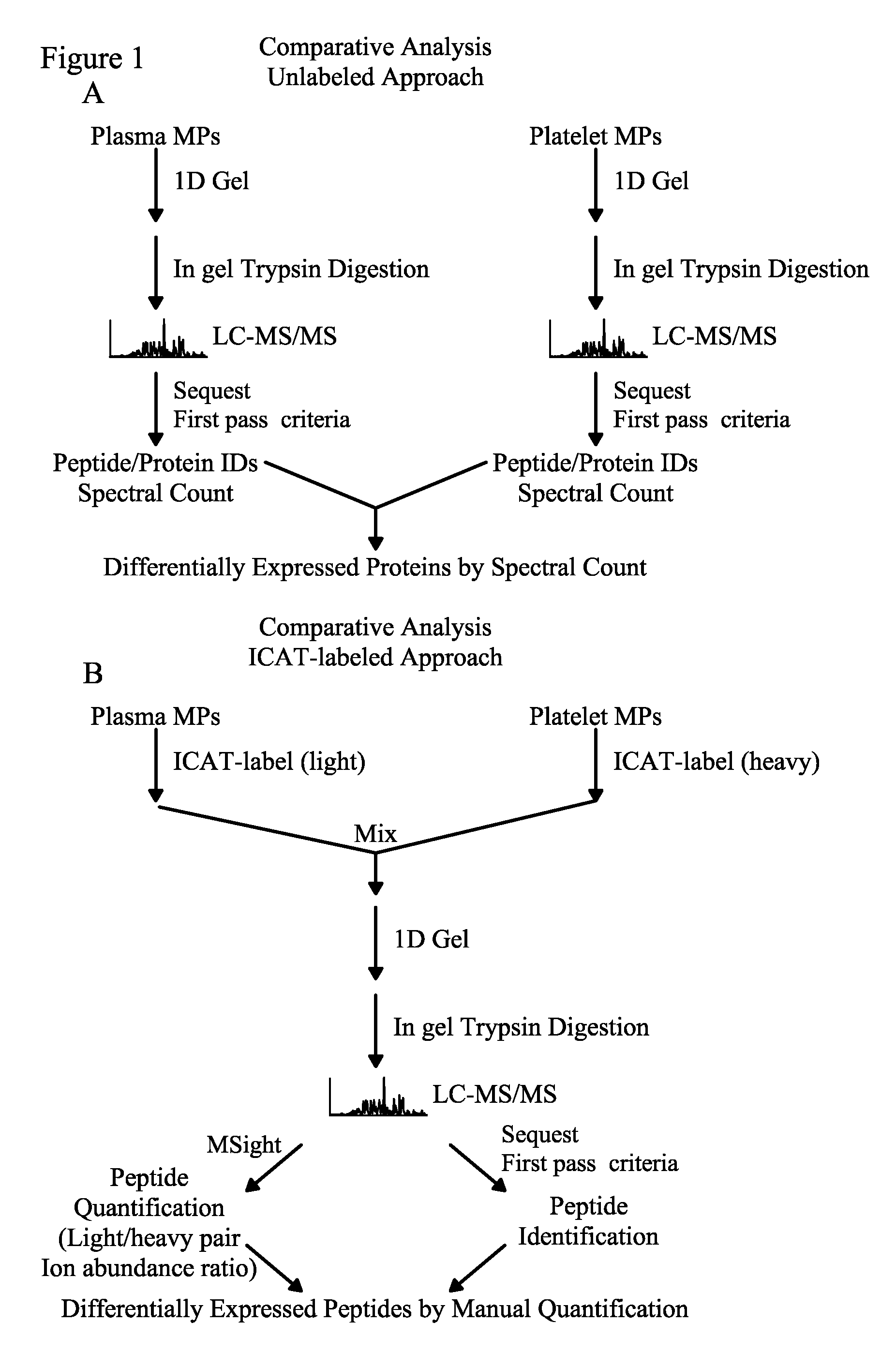Methods for identifying and analyzing biomarkers from plasma-derived microparticles
a plasma-derived microparticle and biomarker technology, applied in the field of methods for identifying and analyzing biomarkers from plasma-derived microparticles, can solve the problem of less likely to contain useful information
- Summary
- Abstract
- Description
- Claims
- Application Information
AI Technical Summary
Benefits of technology
Problems solved by technology
Method used
Image
Examples
examples
[0099]Materials and Methods
[0100]Isolation of platelets and platelet-derived MPs. Platelets and platelet-derived MPs were isolated as previously described (see Garcia B A, Smalley D M, Cho H, Shabanowitz J, Ley K, Hunt D F. The Platelet Microparticle Proteome. J Proteome Res. 2005; 4: 1516-1521). Briefly, human blood was collected by venipuncture into 1 / 10 volume of an acid-citrate-dextrose (85 mM trisodium citrate, 83 mM dextrose, and 21 mM citric acid) solution. Platelet-rich plasma (PRP) was obtained by centrifugation at 110×g for 15 minutes. Platelets were pelleted by centrifugation at 710×g for 15 minutes, and the supernatant, platelet-poor plasma (PPP), was retained for isolation of plasma MPs (see below). The platelet pellet was washed three times, resuspended in 10 mL of Tyrode's buffer, and centrifuged one additional time at 110×g to remove remaining red blood cells or debris. To generate platelet-derived microparticles, ADP (10 μM final concentration) was added to the plat...
PUM
| Property | Measurement | Unit |
|---|---|---|
| concentrations | aaaaa | aaaaa |
| concentrations | aaaaa | aaaaa |
| concentrations | aaaaa | aaaaa |
Abstract
Description
Claims
Application Information
 Login to View More
Login to View More - R&D
- Intellectual Property
- Life Sciences
- Materials
- Tech Scout
- Unparalleled Data Quality
- Higher Quality Content
- 60% Fewer Hallucinations
Browse by: Latest US Patents, China's latest patents, Technical Efficacy Thesaurus, Application Domain, Technology Topic, Popular Technical Reports.
© 2025 PatSnap. All rights reserved.Legal|Privacy policy|Modern Slavery Act Transparency Statement|Sitemap|About US| Contact US: help@patsnap.com



